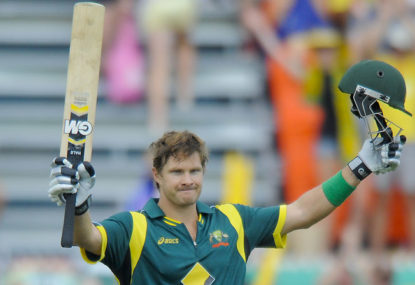The possibiliy of Jofra Archer's career coming to an early end will rob cricket of a bowler with so much talent
While a premature retirement isn’t the solution, he or England want, he may be forced into it if he can’t maintain a long run of matches.

Given the choice, would you rather, a) watch your country’s best players all of the time, b) some of them some of the time or c) not really that fussed.
Player rotation – or whatever mumbo-jumbo description John Inverarity gave it – has never met with a great deal of favour, but the way things are going it won’t be an alternative way, but the only way.
An email from the England and Wales Cricket Board, serving notice of the Test venues for England’s tour of the West Indies next spring, again highlighted the issue of overkill.
When Ashley Giles lost his job as England limited overs coach, one of the criticisms of his sacking made reference to the fact he was often unable to select a first choice XI. A fair point you would think, after all, coaches ask to be judged on their results and only ask for a fair deal with which to do their bidding.
But given the saturated schedule that is the England team’s lot these days – and they’re certainly not the only ones in this boat – it doesn’t take a genius to work out exactly why Giles had to make do with less than a full deck.
The cream of any country’s cricketers, and certainly those who would command a place in all three formats of the game, simply cannot play in every fixture.
This may not be strictly true, as fitness is the crucial factor, but if they do, and keep doing so, then serious injury or burnout are waiting to happen.
With that in mind, you can see why Giles, at various stages, had to do without James Anderson, Kevin Pietersen, Graeme Swann, Stuart Broad and Alastair Cook – all of whom he would’ve had pencilled in when he started the role.
There is a case for operating separate teams for Test matches and their limited overs cousins, and with the way the calendar is it can’t be far from the reality.
But is this really what international cricket is about?
Call me naive, but surely international competition, whatever the sport, is about one nation’s pitting their finest against another’s. If I turn on the TV to watch England versus Australia in a Test match, I want to see Michael Clarke facing Anderson, or Ian Bell being given a working over by Mitchell Johnson.
And, here is the crux of the argument, if I watch a one-day international I want to do the same.
With due respect to those on the fringes, my attention is grabbed far more effectively if it’s marquee cricketer against marquee cricketer, yet this either passes the administrators by or they couldn’t give a monkey’s.
In 2015, with the Test series in the West Indies all confirmed, England could quite feasibly compete in 15 five-day encounters and up to 30 of the 50-over variety.
They visit Australia for a tri-series with India and the host nation, play the World Cup in Australasia, go to the Caribbean, host New Zealand, then host the Ashes, travel to the UAE to face Pakistan, and to round it all off visit South Africa.
Fantastic if a career ambition is to rack up an astronomical number of air miles, less so if longevity is top of the agenda.
The prize assets – the players – are being treated as glorified cash cows by decision-makers, who see big flashing dollar signs and little else.
This is why players get given a few days off here and there. This is why your top-price ticket gives you the opportunity to watch half of the back-ups in action. This is why the ‘player rotation’ isn’t going to change.
Too much is too much whichever way you look at it, but taking a step back and adding a dose of perspective is difficult to do when the cash registers are going like the clappers.
When the best team you can field isn’t the best team you can field, and it’s all of your own doing, something is not right.